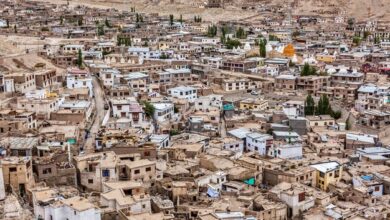Who is Nagadhar Sai Kanderi?

Nagadhar Sai Kanderi is a name that sparks intrigue, curiosity, and admiration. Whether referring to an individual, a cultural artifact, or a geographical entity, this topic blends diverse elements of history, spirituality, and modernity. In this article, we will explore every aspect of Nagadhar Sai Kanderi, uncovering its layers, significance, and the broader context in which it resides.
Who is Nagadhar Sai Kanderi?
The origins of the name “Nagadhar Sai Kanderi” are rich with cultural and spiritual connotations. Breaking the name down:
- Nagadhar: Translating to “holder of serpents,” it is often associated with divine figures in Indian mythology. Serpents symbolize power, protection, and wisdom.
- Sai: A term of respect in Indian spirituality, often linked to saints or revered figures who guide humanity toward enlightenment.
- Kanderi: Potentially a geographical marker or a family name, signifying a region, tradition, or lineage.
Nagadhar Sai Kanderi might represent a saint, a mythological entity, or a modern spiritual guide.
The Historical and Mythological Roots
Nagadhar in Indian Mythology
In Indian mythology, serpents hold a significant place. Figures like Lord Shiva, who wears a serpent around his neck, and Lord Vishnu, resting on the serpent Ananta Shesha, depict the divine association with serpents. “Nagadhar” could be an epithet for a figure embodying these divine traits.
Sai and the Legacy of Saints
The term “Sai” became globally popular with Sai Baba of Shirdi, a 19th-century saint revered for his teachings on universal love and harmony. Connecting “Nagadhar” with “Sai” may suggest a saintly figure who blends mythology with spirituality.
Geographical Significance of Kanderi
If “Kanderi” represents a place, it could be a village, temple town, or region in India with cultural and spiritual relevance. Many places in India are named after saints or mythological figures, housing shrines, temples, or ashrams.

Temples and Sacred Spaces
India is renowned for its ancient temples dedicated to deities and saints. If Nagadhar Sai Kanderi is a temple or pilgrimage site, it might attract devotees seeking blessings, healing, or enlightenment.
Cultural and Spiritual Relevance
Festivals and Celebrations
If Nagadhar Sai Kanderi is linked to a saint or temple, annual festivals could play a central role. Such events are often marked by processions, devotional music, and community feasts.
Teachings and Philosophy
The teachings attributed to Nagadhar Sai Kanderi might focus on inner peace, universal harmony, and the relationship between humans and nature, particularly serpents as symbols of wisdom and renewal.
Modern Connections
Nagadhar Sai Kanderi in Literature and Media
The name could appear in literary works, films, or folklore, symbolizing resilience, spirituality, or the fight against adversity.
Influence on Art and Architecture
If associated with a temple or region, the art and architecture of Nagahar Sai Kderi could feature intricate carvings, murals, or statues reflecting mythological and spiritual themes.

A Symbol of Unity and Diversity
In a multicultural society, Nadhar Sai Kanderi could serve as a symbol of unity, transcending regional and religious boundaries. Saints and spiritual figures often promote inclusivity, making their teachings relevant to people from various walks of life.
Frequently Asked Questions About Nagadhar Sai Kanderi
1. Who was Nagadhar Sai Kanderi?
Nagadhar Sai Kderi might be a saint, mythological figure, or symbolic representation combining Indian spirituality and mythology.
2. Is there a temple dedicated to Nagadhar Sai Kderi?
If this refers to a temple or shrine, it could be a site of pilgrimage where devotees gather for worship and blessings.
3. What is the meaning of the name Nagadhar Sai Kaeri?
The name combines “Naghar” (serpent holder), “Sai” (spiritual guide), and “Kanderi” (possibly a location or family name).
4. Are there any festivals associated with Sai Kanderi?
If linked to a temple or saint, annual festivals celebrating their teachings, birth anniversaries, or mythology might be observed.
5. What is the significance of serpents in Nagadhar Sai Kaeri’s story?
Serpents symbolize power, wisdom, and protection in Indian mythology, suggesting the figure’s divine and protective nature.
6. How can one learn more about Nagadhar Sai Kderi?
Exploring local folklore, spiritual texts, and regional histories can provide deeper insights.
Conclusion
Nagadhar Sai Kderi, whether an individual, place, or concept, embodies the essence of spirituality, mythology, and cultural heritage. Its rich tapestry of meanings makes it a fascinating subject for exploration, bridging ancient traditions with modern interpretations.



